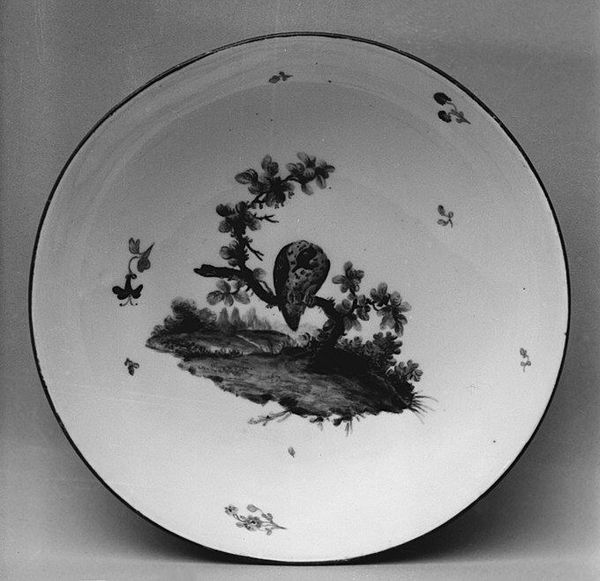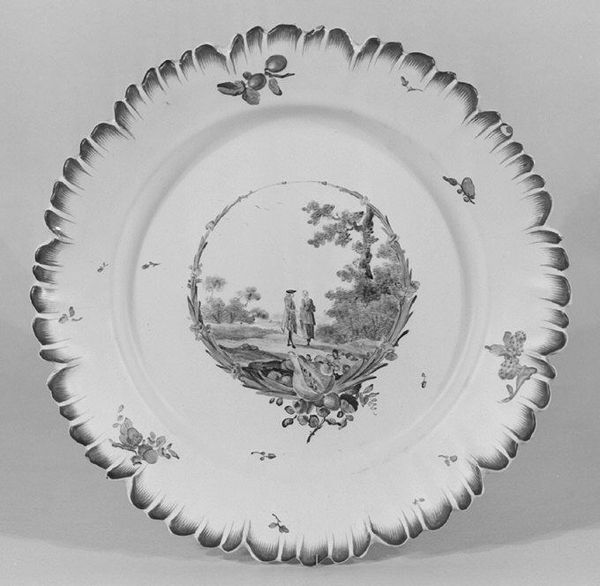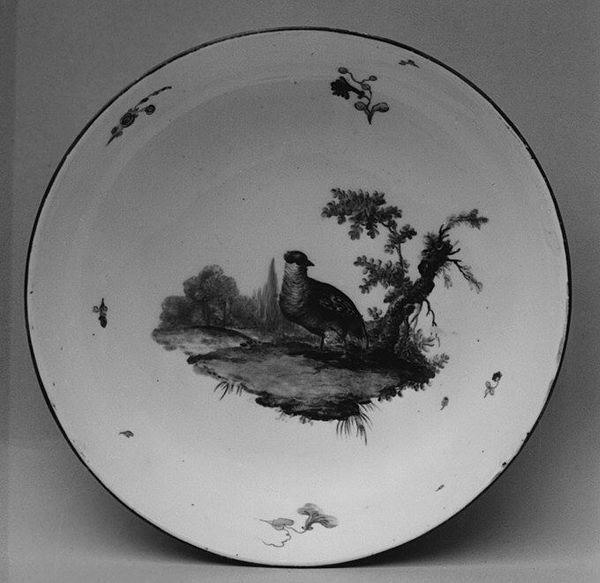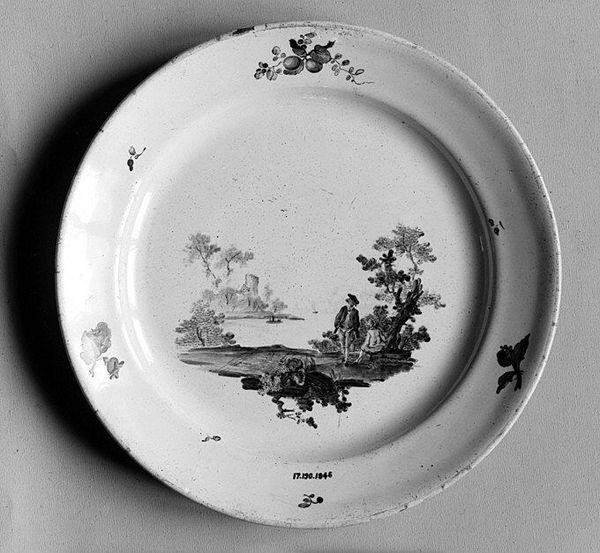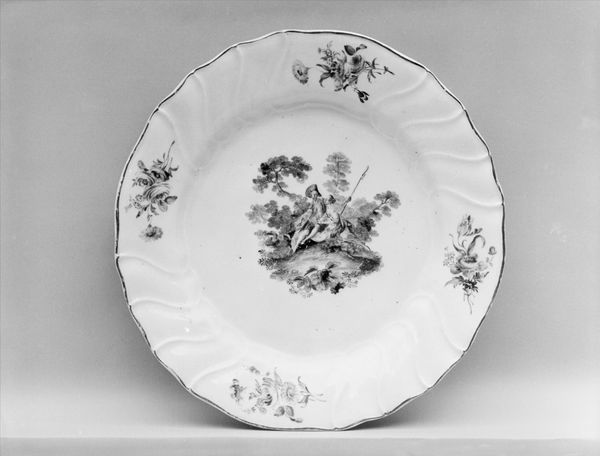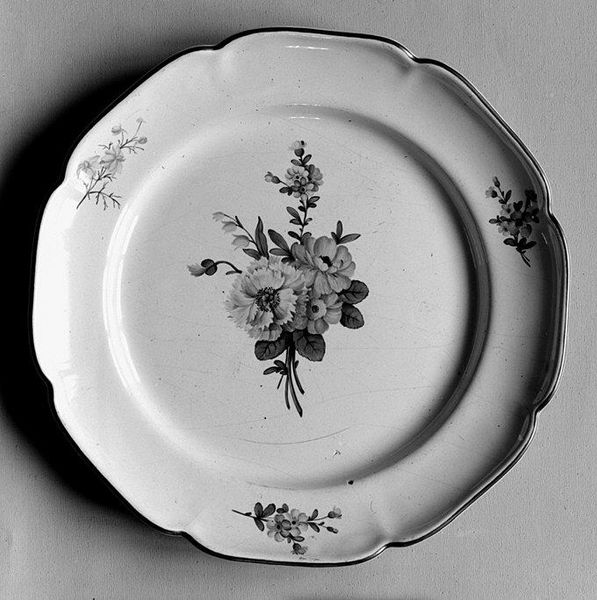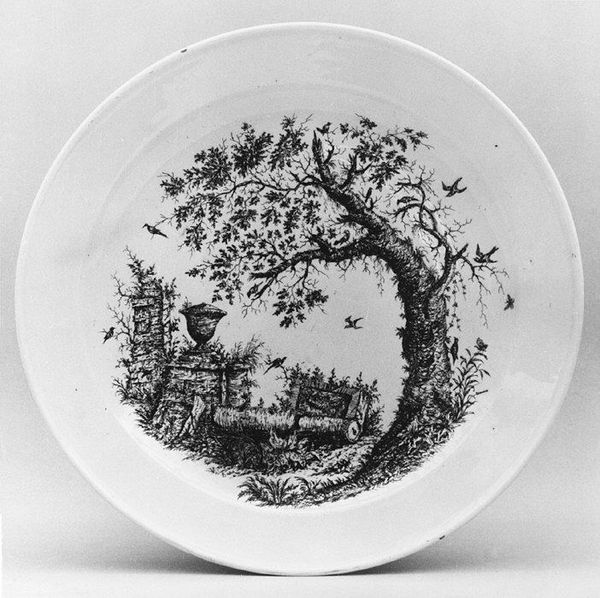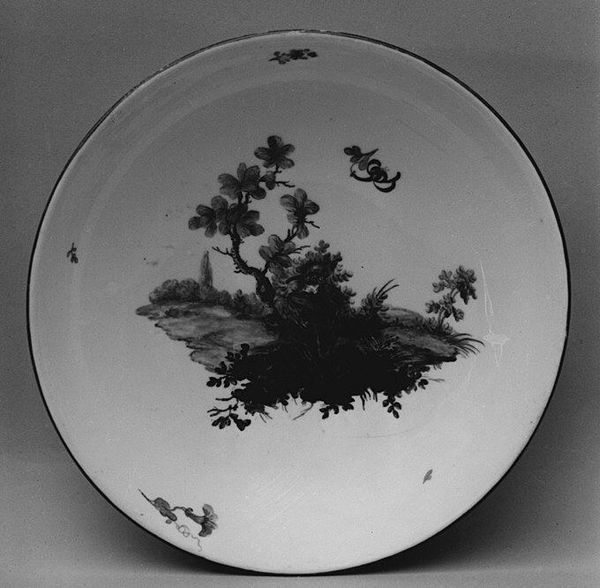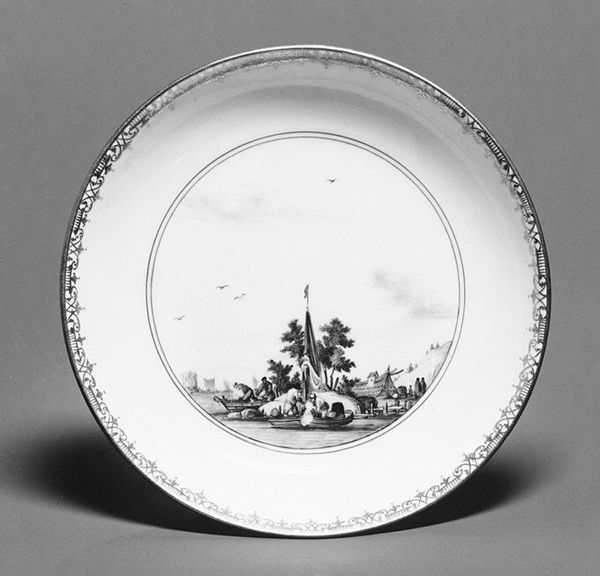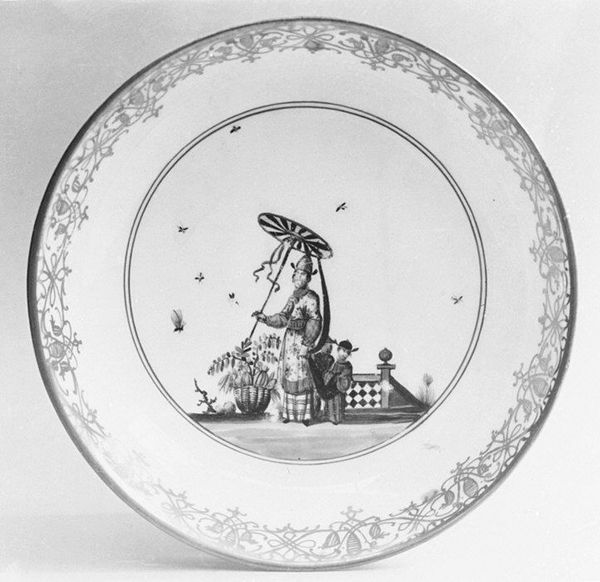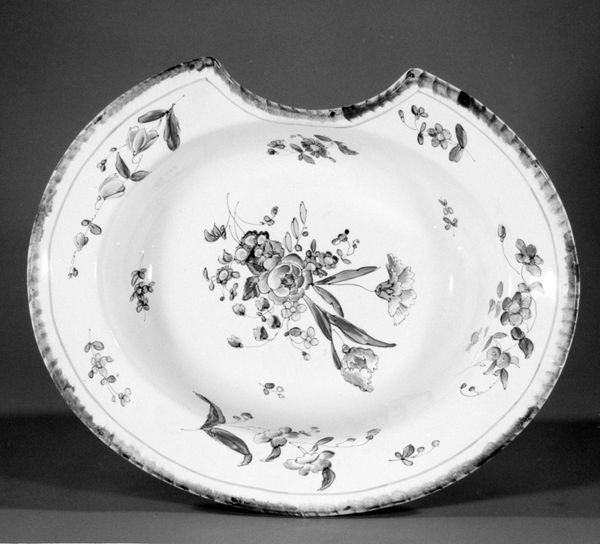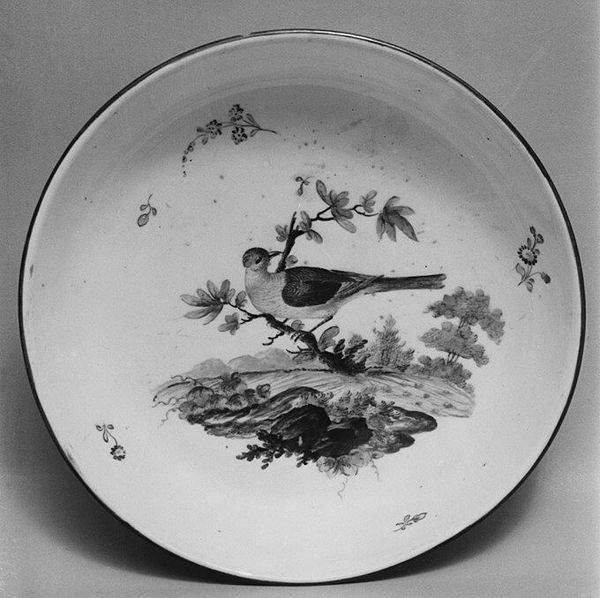
Dimensions: Diameter: 9 1/8 in. (23.2 cm)
Copyright: Public Domain
This plate was created by Fidelle Duvivier in the 18th century, using ceramic material. Specifically, it’s made of earthenware covered with tin glaze, a technique that gives it a bright white surface perfect for painted decoration. The process of making such a plate was complex, involving skilled labor at every stage. Potters formed the clay, and then other artisans applied the glaze and meticulously painted the design you see here. The central image, a pastoral scene framed by foliage, is typical of the period's taste for idealized nature. The scalloped edge adds a touch of refinement. Such plates weren’t just functional objects; they were also displays of wealth and taste. Owning finely crafted ceramics signaled one’s status in society. This plate reflects the broader social and economic context of its time, where craft production was intertwined with issues of labor, consumption, and social class. Examining the materials and making of objects like this helps us appreciate their full cultural significance, blurring the lines between craft and fine art.
Comments
No comments
Be the first to comment and join the conversation on the ultimate creative platform.
